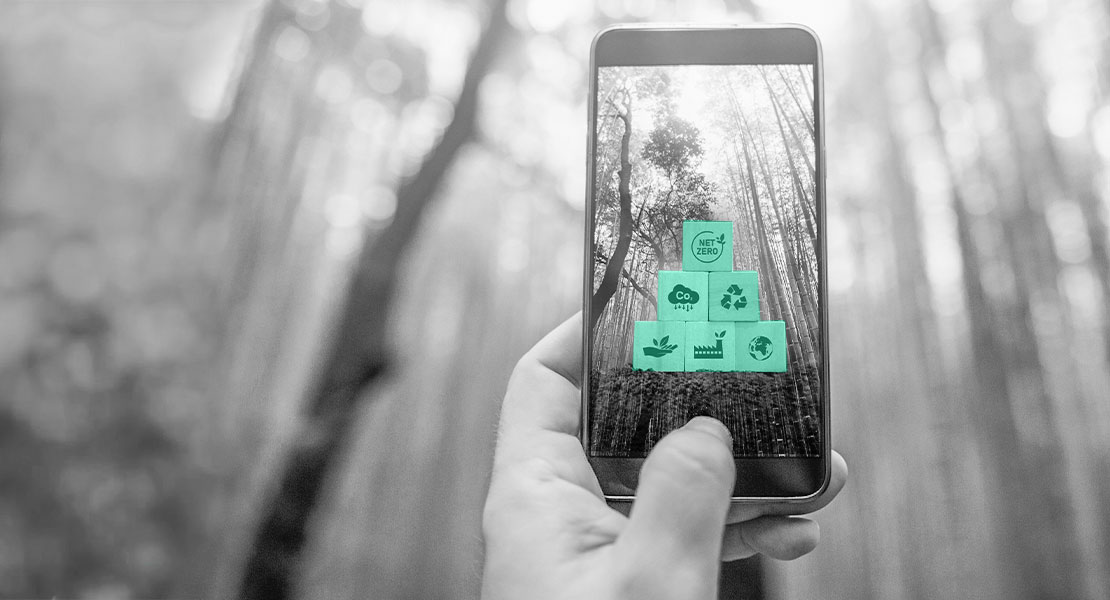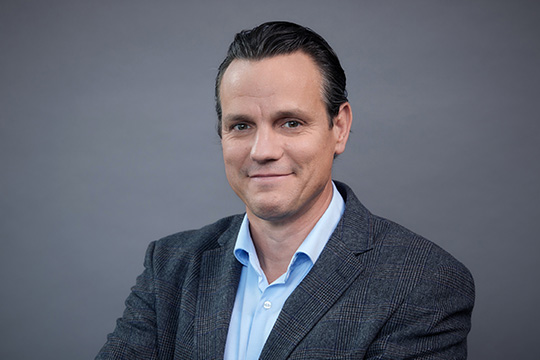The climate crisis is also putting the issue of sustainability at the top of the strategic agenda in the telecommunications industry. In large parts, the industry is striving to achieve net zero by 2050 at the latest. Part 2 of this article provides a detailed evaluation of solutions and next steps. (Read Part 1 now).
Solutions and actions
Transparent data. Transparent and reliable data is the basis for every GHG emission reduction strategy because it enables companies to evaluate their environmental impact and find impactful strategic recommendations. As a first step, telco companies should focus on improving their sustainability reports. It is crucial to report a complete CCF based on the GHG protocol. According to the GHG protocol, Scope 1 and 2 should be quantified when disclosing the CCF, while Scope 3 emission reporting it not required (United States Environmental Protection Agency, Center for Corporate Climate Leadership).
However, within the ICT industry, also Scope 3 emissions become more and more important because competitors, customers, and shareholders pressure for complete and transparent reporting. Scope 3 emissions are a bigger hurdle within the industry. The 15 categories of Scope 3 depend on secondary sources, industry-wide databases, and many assumptions. Yet, it is worth to evaluate all relevant categories, in order to develop the bigger picture as basis for the emission reduction strategy. For support, there are several companies, which provide databases, tools, and consulting services for the Scope 3 evaluation. As a benefit, a verified Scope 3 emission report may produce a competitive advantage for the reporting company due to increased credibility, perceived transparency, and a positive image. Moreover, consistent and industry wide KPIs increase transparency and enable the reporting companies to monitor and track their sustainability performance.
Especially in the areas of energy consumption and energy efficiency consistent KPIs within the industry enable comparison and progress tracking. Some important KPIs are the total energy consumption, combined with the composition of energy sources. Here, it is vital to report in equal units (e.g., MWh), so that the share of renewable energy sources is apparent. Furthermore, energy intensity and carbon intensity represent the impact of energy efficiency and renewable sourcing. Hence, the reporting company may track and report its progress and the impact of its energy consumption.
Finally, transparent reporting of the impact on the 17 SDGs has a positive impact on competitiveness, transparency, and credibility. It is essential to report the impact of every single SDG with a detailed description, referring to specific projects. There are seven SDGs which focus on environmental sustainability: No. 6 clean water and sanitation, No. 7 affordable and clean energy, No. 11 sustainable cities and communities, No. 12 responsible consumption and production, No. 13 climate action, No. 14 life below water, and No. 15 life on land. In the telco industry, all companies include impact measurement for environmental SDGs in their sustainability reporting. However, the number of SDGs reported, and the level of detail differ in the sustainability reports. It is recommended to conduct a detailed evaluation on the impact on every single SDG. Here, the level of detail persuades more than the quantity.
Different reporting for different regions. Because of differing electricity grids within different countries or regions, the GHG footprint of a reporting company may be higher due to the location of their production and the region of sales. To transparently represent such differences, telco companies may develop separate chapters of their reports for different regions. Hence, the impact for the use of sold products in regions with more emission-intensive electricity grids is represented accordingly. This reporting solution may be especially beneficial for enterprises with a higher share of product sales in developing regions, like Africa or India. Here, the electricity grids only entail a small share of renewable energy sources, and operating companies often do not have the power to impact the grid transformation towards more renewables.
Collaboration is key. Sustainability and emission reduction efforts are concerning not only single big corporations but everybody. As mentioned before, Scope 3 emissions can account for more than 90% of the total carbon footprint of ICT companies (Friedrich, Roman, et al 2021). Furthermore, customers and shareholders increasingly demand responsibility, including, for example, transparent information about raw materials (Cherel-Bonnemaison, et al 2021). Accordingly, upstream- and downstream- activities are the most essential areas to work on, when targeting net zero. Since such activities are out of the direct control of individual companies, it is essential for the ICT industry to work together with their suppliers and customers and create a green supply chain and production. Here, the collaboration must come from both sides.
On the one side, reporting companies need to actively collect the data from their suppliers and evaluate potential layers of improvement to become more sustainable. Here, training and workshop opportunities for suppliers to enhance sustainable practices, but also switching to different suppliers are potential actions. On the other side, as a supplier, transparent reporting and sharing of data with the customers is essential. For instance, Scope 1 and 2 GHG emissions of vendors impact Scope 3 emissions of operators. Therefore, transparent reporting by vendors enables operators to estimate their Scope 3 emissions in more detail. A similar case can be made for the PCF. Also here, the entire lifecycle of a product is evaluated, beginning at the extraction of raw materials, and ending at the end-of-life treatment. Thus, the importance of collaboration with the entire value chain becomes evident because the necessary data needs to be gathered and the impact of a product improved.
Create industry-wide methodologies. Industry-wide methodologies and common practices enable comparability and competition. One big challenge for vendors and operators in the telco industry is developing a PCF for their network equipment. While there are industry specific examples (e.g., ITU L.1410, ETSI ES 203 199), and one calculation in more detail for a base station (NGMN Alliance 2021), a consistent guideline is lacking. To develop such guideline, a working group from the telco industry and an independent standardization initiative can develop such calculation methodology and define the concrete content for the telco industry.
In a second step, a different working group in combination with NGMN or GSMA can push the standard in the industry and create commitment. Consequently, the working relationship between telco operators and vendor benefits from a consistent methodology because it supports operators in comparing different products regarding their sustainability, but it also supports vendors with a specific guideline. A similar approach can be chosen for the definition of consistent KPIs. Here, a catalog of meaningful KPIs for energy efficiency can be developed and pushed within the industry. Some initial thoughts can already be found in a report by GSMA and a white paper by NGMN (GSMA Intelligence 2021;NGMN Alliance 2021).
Be ambitious. As mentioned, the pressure on reaching the 1.5 °C target is increasing. When following the current trend, the global warming would reach 1.5 °C by January 2034, which would have severe impacts on natural and human systems (European Commission; Climate Copernicus 2021; IPCC 2018). Physical risks like in the form of more frequent extreme weather, such as storms, droughts, and wildfires could damage facilities and disrupt the workforce (Colback 2020; Deloitte 2021). A concrete example for the telco industry can be found in the floods that occurred in Germany’s Ahr valley in the summer 2021. The mobile network broke down because power supply lines, base stations, cables, and electrical towers were disrupted by the flooding (Lindern, et al 2021). The reconstruction of the mobile network took months and lots of flood victims also needed to cope without internet connection (Jansen 2021).
Furthermore, climate tipping points trigger changes in part of the climate system and are irreversible, such as the meltdown of ice sheets and glaciers, the collapse of circulations, and the dieback of forests, coral reefs, and more (Lenton 2021). The probability of tipping points to occur increases with global warming, having high probability at 2 °C of global warming (Lenton 2021). Thus, an increase in global warming of 0.5 °C has an immense impact on the planet and should be prioritized by every human system and organization. Ambitious sustainability strategies with innovative solutions are increasingly relevant to limit global warming and manage risks related with climate change. As an orientation, the SBTi provides a guideline to set science-based targets for becoming net zero (Science based targets initiative). Accordingly, it is recommended that telco companies set ambitious targets based on SBTi, to limit the trend to 1.5°C.
Next steps, long-term outlook
Circular economy. In order to tackle environmental challenges like limited resources, global warming, and increased waste, business models and economic processes need to be reinvented (European Parliament; Ellen MacArthur Foundation). Currently, most businesses function in a linear way, meaning the products are sourced from raw material, manufactured, used, and disposed after some time (Taylor 2020). Hence, the amount of waste going to the landfill is immense, and raw materials are limited. A transition towards the circular economy provides one way to reinvent business models. A report by the Ellen MacArthur Foundation describes some simple principles that enable the transition to a circular economy, including designing out waste, building resilience through diversity, relying on renewable energy sources, thinking in systems, and using waste as input factors (Ellen MacArthur Foundation 2015).
For the telco industry, there are key circular economy initiatives, which may be implemented in the areas of supply chain management, operations, and the product and service portfolio (Kreher 2021). In most cases, increasing the lifespan of a product by reuse relates to lower emissions than recycling due to the related energy consumption. For instance, the implementation of device repairment as additional revenue stream may be one way to increase the lifetime of products. An example from the ICT industry can be seen with the Fairphone. The company started the transition towards a circular economy by developing a modular smartphone and increasing its longevity by offering the user to exchange broken parts and upgrade hardware (Fairphone). Furthermore, they are closing the loop by encouraging customers to return their old devices and collaborate with partners to maximize the value of used resources (Fairphone).
Technological/ digital innovations. Several technological and digital innovations allow companies to decrease their energy consumption and increase energy efficiency, and thereby reduce GHG emissions. In the following section, we will name a few innovations that may play a big role for the telco industry. First, 5G provides the opportunity to reduce unnecessary base station energy consumption by putting components into sleep mode when they remain unused for some time (NGMN Alliance 2021), while this feature is available for 4G in some form, in 5G it is more efficient due to lean control channel design. For instance, during the night the network traffic load remains low, which might be used as an opportunity to save energy of some components (Frenger, et al 2019). Additionally, artificial intelligence may support activating specific types of shutdown functions, using data like configuration and performance statistics (NGMN Alliance 2021). Second, the network design is an important strategy for reducing energy consumption because it allows to combine the most efficient spectrum bands available (NGMN Alliance 2021).
The co-design concept allows to distribute and control data channels for multiple spectrum bands, reducing the energy consumption connected with each band having dedicated control channels (NGMN Alliance 2021). Also, a focus on energy consumption needs to be set in the entire lifecycle of the product, meaning from cradle-to-grave (Burrell). This may foster innovative design and reduce GHG emissions throughout the lifecycle. Finally, artificial intelligence can support operators to optimize the sourcing of locally generated energy and energy used from the grid, enabling energy utilization mostly produced locally at the mobile site (NGMN Alliance 2021). Here, machine learning techniques may recognize fewer energy produced locally during winter hours than during summer hours and adapt their mobile site configuration accordingly with respect to energy consumption.
Handprint concept. As a relatively new concept, the handprint discussion accelerated. The handprint concept is especially interesting for the telco industry, since digitalization has a positive impact on sustainability within business activities.
First, the direct handprint/ enablement is of biggest interest for the telco industry. To be more concrete, the telco industry enables other industries to avoid emissions through using the mobile network. GSMA suggests a substantial positive impact of around 2,135 million tons CO2e in 2018, ten times greater than the emissions of the sector (Google Cloud 2021). As a long-term strategic goal, the enablement impact of the telco industry may be communicated to highlight the positive impact of digitalization, connectivity, and other services and products. However, when reporting the enablement factor, two considerations should be taken into account. On the one side, reducing the own sustainable impact should be the focus of every sustainability strategy. Thus, Scope 1-3 reporting and reduction strategies are essential and should be prioritized. Reporting the enablement concept entails the risk of shifting the focus off the urgency to reduce GHG emissions and mislead customers, investors, and other stakeholders, leading to a loss of credibility.
On the other side, a compensation of a telco company’s Scope 1-3 GHG emissions with enabled GHG emission reductions within other industries is unacceptable. Such behavior will seem like a greenwashing or concealing strategy and entails a sub-optimal resource allocation. When telco companies decide to report enablement, it should be reported as a separate KPI for specific services or products. For instance, Deutsche Telekom calculates its enablement as separate KPI and additionally lists the contribution of each service (Deutsche Telekom 2020). However, since digitalization, connectivity, and the use of new technologies have an immense impact on the sustainability within other industries, encouraging a discussion about how to illustrate such an impact could be beneficial. Here, several entities and stakeholders, like the entire value chain, standardization organizations, and alliances like NGMN and GSMA should be included in the discussion.
Second, the indirect handprint may be determined for the telco industry but has a diminishing impact. One concrete example can be seen in the transition to remote work during the corona pandemic. The intended benefit for users was their health because staying at home reduces the likelihood of getting infected. However, in many companies, a positive by-product of this process was avoided emissions due to, for example, business travel or employee commuting. Since the indirect handprint often is unintentionally, a calculation seems irrelevant.
Third, the relative handprint/ Scope 4 aims at addressing the positive impact of innovation potential, which might not be adequately addressed by Scope 1-3. While emission reduction progress is an important focus, innovation is required to achieve the 1.5 °C target, even if the development phase temporarily increases GHG emissions (Rio ESG 2021). Scope 4 emissions are designed to capture the avoided emissions, arising from the use of more efficient products or services (Klein 2020). The telco industry might use this concept to highlight the innovative solutions of specific products, services, or projects. However, some recommendations should be followed.
First, when reporting Scope 4, a complete CCF of Scope 1-3 needs to be existent. Focusing on Scope 4 without having a CCF creates the image of greenwashing and is a sub-optimal allocation of resources. Second, Scope 4 should not be integrated into the CCF, nor the PCF. The PCF and CCF aim at developing a picture of the total climate impact of companies or products. Scope 4 may only be used to report the impact of specific modernization projects compared to a baseline, where it is necessary to compare old and new versions of equipment. However, avoided emissions may not be subtracted of the CCF, nor the PCF. Third, when calculating Scope 4, the entire lifecycle of the compared projects needs to be considered, to account for a potential increase of emissions at another stage.
Many thanks to Tim Krüger for his collaboration on this article.
Bibliography:
United States Environmental Protection Agency, Center for Corporate Climate Leadership. Scope 3 inventory guidance.
Friedrich, Roman, et al (2021). Putting Sustainability at the Top of the Telco Agenda. Bosten Consulting Group.
Cherel-Bonnemaison, et al (2021). Buying into a more sustainable value chain. McKinsey & Company.
NGMN Alliance (2021). Green Future Networks, Network equipment eco-design and end to end service footprint.
GSMA Intelligence (2021). Going green: benchmarking the energy efficiency of mobile.
NGMN Alliance (2021). Green Future Networks, Network energy efficiency.
European Commission; Climate Copernicus (2021). How close are we to reaching a global warming of 1.5°C?
IPCC (2018). Global Warming of 1.5°C. Special Report. Annex I.
Colback (2020). The role of business in climate change. Financial Times.
Deloitte (2021). Organizations are feeling the pain of climate change: Here are five ways it's affecting their business. Forbes.
Lindern, et al (2021). Warnsysteme in Deutschland, Deutschland warnt - aber leider falsch. Zeit Online.
Jansen (2021). Digitale Infrastruktur, Viele Flutopfer noch ohne Internet. Frankfurter Allgemeine Zeitung.
Lenton (2021). Tipping points in the climate system. Weather, Vol. 76, 10.
Science based targets initiative. Net-zero. The net-zero standard.
European Parliament. Circular economy: definition, importance and benefits.
Ellen MacArthur Foundation. Circular economy introduction. What is a circular economy?
Taylor (2020). What is the linear economy and why do we need to go circular? Planet Ark.
Ellen MacArthur Foundation (2015). Towards the circular economy, Economic and business rationale for an accelerated transition.
Kreher (2021). How a circular economy can help enable 'green telco'. KPMG.
Fairphone. Story, Our impact. Longevity.
Fairphone. Story, Our impact. Circularity.
Frenger, et al (2019). A technical look at 5G energy consumption and performance. Ericsson.
Burrell. Sustainability and the life of a base station. Nokia.
Google Cloud (2021). Sustainability. Four consecutive years of 100% renewable energy - and what's next.
Deutsche Telekom (2020). Corporate Responsibility Report. Environment, Enablement factor.
Rio ESG (2021). What is Scope 4? Reporting avoided CO2 Emissions & More.
Klein (2020). Scope 4 emissions. Driving corporate climate action. DFGE.
Click here for the Glossary: Sustainability jargon









